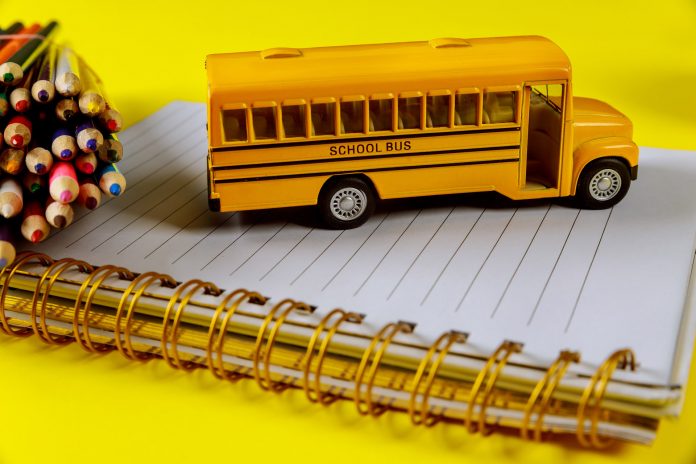President Donald Trump has called on states to accelerate their plans for “Opening Up America Again” from widespread COVID-19 closures, and that includes safely returning schoolchildren to physical school buildings as soon as possible. But much work and even more questions remain for states and school districts before that can realistically happen.
The nation has been operating for the past month under the assumption that, for the most part, schoolchildren would continue to learn remotely until at least the next school year. But when the next school year begins, will school districts need to transport different grades on different days? Will they need to set up centralized bus hubs? How will they take the temperatures of students before allowing them on the bus? And what will physical distancing requirements mean for passenger capacity?
First, the new dates to start the next school year must be determined, observed Michael Shields, director of transportation for Salem-Kaiser School District in Oregon. Until those dates are set, school districts will be unable to develop set procedures for re-starting school bus service.
“Until our government determines what the social distancing rules are, we don’t know when to start school and backward plan,” he added. “We need to know the parameters.”
Under normal circumstances, Shield said Salem-Kaiser requires two-and-a-half-months of lead time to plan and implement new school bus routes and everything that goes along with them. But in response to COVID-19, his transportation department is left to planning based on all conceivable scenarios. He shared that his department is trying to determine all different potential dates for activities like driver in-service training, bidding and assigning routes, and communication to parents on the service to be provided.
Then there are the myriad new considerations that must be made to protect students, drivers and other transportation staff, on the route and at the transportation facility. He suggested that transportation directors hold regular meetings with coordinators, supervisors and area directors to discuss needs, such as staffing levels and continued driver training. The same goes for points of contact in other district programs, such as special needs, pre-kindergarten and career/vocational.
Shields also noted the importance of student transportation leaders proactively working with the school district superintendents and administrators to share the scenarios being developed as well as their potential fiscal costs. Superintendents are more apt to be focused only on returning to the physical classroom, not how to transport the students there.
He recommended that transportation directors anticipate their budget needs and be prepared to share fleet data with their supervisors.
“Get a seat at the table. Transportation needs to lead with the scenarios and suggestions,” he recommended. “Know the end costs or give estimates at least on what the suggestions will mean.”
Similarly, he said transportation departments should proactively meet with city and county transportation representatives to determine the schedule for road and highway construction projects.
Shields also advised that school districts seek guidance from their state departments of education on how to meet these challenges and more head-on. For example, if students are currently learning remotely, can districts do the same with their school bus drivers? Do school districts have a plan for meeting annual school bus requirements? And what is the direction for bus drivers or other staff to screen students at bus stops?
“Are you working with state agencies on rules in place or needed? Otherwise, we’ll come to fall and have a bunch of drivers out of compliance,” he pointed out.
Related: Time for a New Playbook When It Comes to Reopening School
Related: Update: President Trump Signs Latest $484B COVID-19 Aid Package
Related: COVID-19 Resources for Student Transporters
School Transportation News sent a survey to all 50 state directors of school transportation at state departments of education, public safety or motor vehicles, asking about a dozen questions on the guidance states are providing. At this writing, 31 state directors have submitted complete responses.
Nearly three-quarters of these states have implemented extensions or waivers for school bus driver medical examination certificates, while 71 percent of the states are extending commercial driver’s licenses that have expired or are expiring. Seventy percent said they have relaxed requirements on new CDL applicants, and 61 percent have made similar moves for commercial learning permits.
In terms of cleaning and sanitizing school buses to limit virus transmission, half of the 38 states responding said school districts are relying on procedures that were already established. These practices commonly include spraying disinfectant and wiping down surfaces. Nearly as many states, 42 percent, said they “do not know” what steps are currently being taken.
Meanwhile, 42 percent of those states said school districts are using “extraordinary” procedures such as bleach and UV-light sterilization. Half of the states said they “do not know” how to answer that question.
Just as many states (36 percent of 36 states responding) said there are discussions currently being held at the state level about protecting student transportation staff and students on the school bus when operations resume at some point in time. The remaining 28 percent said such discussions have yet to take place.
Nearly three-quarters of those 36 states said there is no current guidance provided or they were unaware of guidance to school districts on how to provide additional protection to school bus drivers and students.
Despite remaining closed for normal transportation of students, many school districts remain operational in terms of ongoing vehicle maintenance. Just over a third of 38 state directors responding said school districts are using closures to keep up on school bus maintenance. Nearly 29 percent said their school districts are performing both maintenance and equipment or technology installations. Nearly a third said they did not know what their districts are doing.
What scenario planning is your school district or bus company performing for next school year? Post on our Facebook page at www.facebook.com/stnmagazine, or email ryan@stnonline.com.














